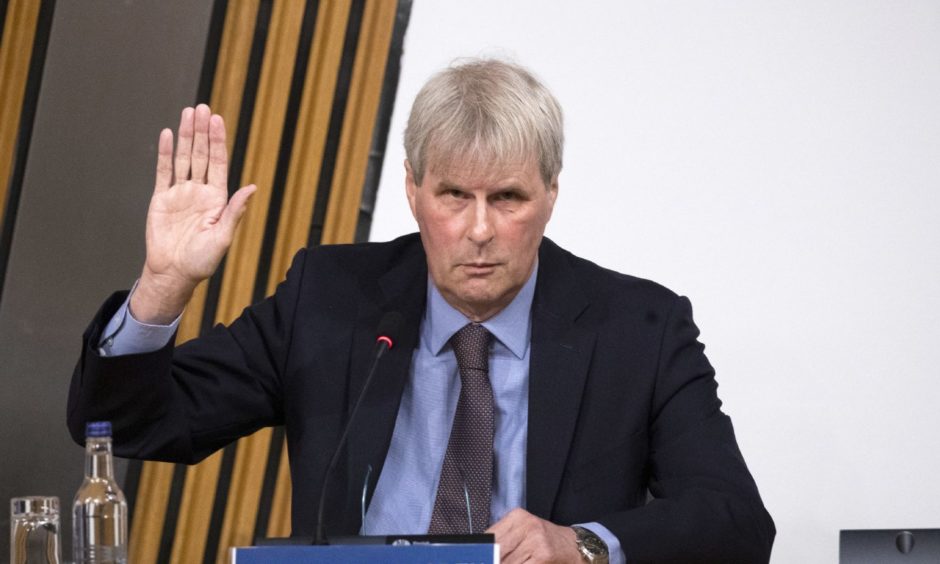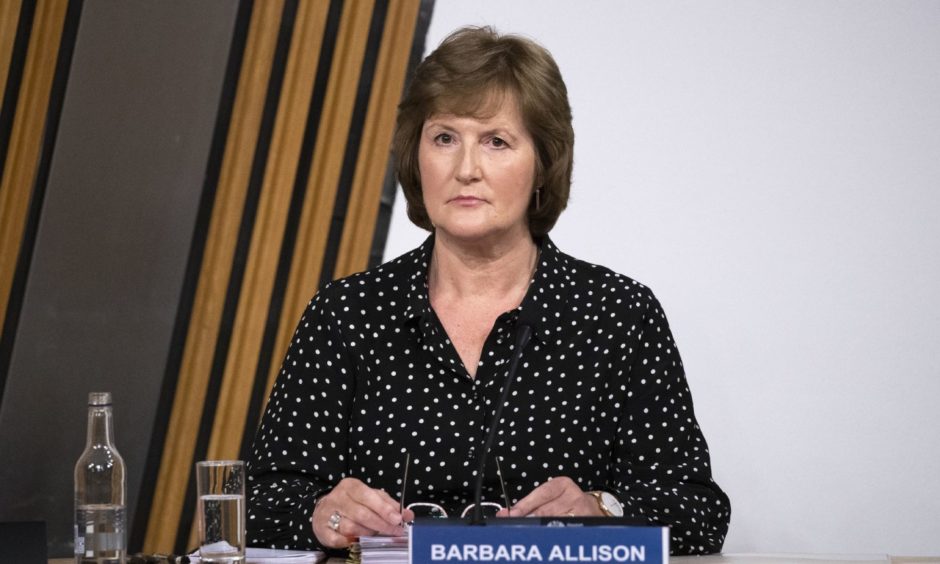Alex Salmond displayed “bullying and intimidatory behaviour” while First Minister, according to claims by Scotland’s former top civil servant.
Sir Peter Housden, who served as permanent secretary from 2010-2015, made the claim during the Scottish Government’s handling of complaints against Mr Salmond.
The former civil service chief refused to answer repeated questions on whether he had told Nicola Sturgeon – then Deputy First Minister – about concerns over any government ministers during his time in the government.
He also admitted that no formal complaints had been raised against ministers during his time as permanent secretary, adding “as extraordinary as it may sound now”.
Sir Peter said while the former first minister’s office “ran really well” much of the time, he added that it was “punctuated” by bullying behaviours that “were a problem”.
The retired civil servant said there was “no indication” at any stage during his time in the Scottish Government, or before, of suggestions of “sexual misconduct” involving the former first minister.
Asked about whether he had passed on details of any concerns regarding the behaviour of ministers to his successor, Leslie Evans, Sir Peter said she was already part of the senior management team so would be aware of any relevant issues.
He added: “We had no known egregious acts or formal complaints or indications of sexual misconduct so, as far as we knew, we had no bodies buried.”
The committee also heard from Barbara Allison, former head of HR at the Scottish Government, who said she was “aware Mr Salmond could be demanding and could be difficult to work for”.
However, Ms Allison, who is currently the government’s director of communications, said employees also expressed they “liked working for him”, describing him as “visionary”.
When asked if the lack of formal complaints indicated staff were reluctant to take any concerns they had over the behaviour of ministers further, she admitted the government’s statistics for formal complaints raised were “low”.
But added that she is a “huge advocate” for informal resolution, stating that if a matter cannot be resolved through this way, then “absolutely people must have recourse to a formal process”.
Here are the main points to emerge from the appearance of Sir Peter Housden and Barbara Allison:
No formal complaints made against ministers on bullying, harassment or ‘any other regard’, according to retired civil service boss
Sir Peter Housden said in his time as permanent secretary, between 2010 and 2015, there were “no formal complaints” made against ministers “in any respect, bullying harassment or any other regard”.
He added that as “extraordinary as it may sound now” this was the case and extended to all of the environments he has worked, including Whitehall and local government.
When quizzed by committee member Maureen Watt on whether there was any involvement with trade unions with regards to complaints about ministers, Sir Peter said there were conversations from “time to time” with senior union officials about the “circumstances in the first minister’s office”.
He added: “At no stage did those crystallise into a complaint, either an individual complaint or a collective class action type of issue.”
Sir Peter also made frequent reference to the culture within the government at the time, stating it was “very much one of informal handling of these situations”.
In giving evidence, Ms Allison, said she was not aware of “specific complaints” but was aware of “issues that had been raised through the trade unions”.
Claims former first minister Alex Salmond displayed ‘bullying and intimidatory behaviour’
Committee member Margaret Mitchell asked Sir Peter if he was aware of any concerns which had been expressed, but which did not get to the stage of a formal complaint, in relation to harassment including ministers and specifically the former first minister.
In response, he said: “I knew the former first minister could display bullying and intimidatory behaviour, yes.”
Giving evidence to the inquiry, Sir Peter said there was a “gross imbalance of power” in the government that may have put staff off coming forward with concerns.
Asked if he witnessed Alex Salmond shouting at or bullying any staff members, Sir Peter said: “I was well aware – in the way I have described – that those behaviours took place.
“I had a number of conversations with people who had been on the receiving end of that and as I indicated many conversations about what we could do to prevent their occurrence.”
However, Sir Peter added that this type of behaviour never happened in his presence.
‘No indication’ of suggestions of sexual misconduct on the part of the former first minister
Committee member Alex Cole-Hamilton asked Sir Peter if he was aware of a “hum of concern about sexually inappropriate behaviour” on the part of the former first minister.
The retired civil servant said: “There was no indication at any stage in my time in the Scottish Government, or indeed before. No suggestions of sexual misconduct.”
During her questioning from MSPs, Ms Allison also said “for clarity” that she was “not aware of any issues about sexual harassment”.
Following a criminal trial, the former first minister was found not guilty of 12 sexual assault charges, including one of attempted rape, and not proven when it came to one of sexual assault with intent to rape.
The Holyrood inquiry has been set up to scrutinise how the Scottish Government acted when two sexual harassment complaints were made against Mr Salmond in January 2018.
Former civil service boss refuses to say if Nicola Sturgeon was alerted to concerns about government ministers
Sir Peter refused to respond to repeated questions on whether he had spoken to Nicola Sturgeon – who was deputy first minister at the time of his employment – about harassment concerns.
In response to questioning from committee member Margaret Mitchell he said he could not give “specifics in terms of individuals”, stating he had a “duty of confidentiality” to the people he spoke to.
He said: “I am bound by the provisions of the civil service management code in terms of confidentiality which clearly extends to my dealings with individual ministers.”
When asked by committee convener Linda Fabiani if it would be appropriate to speak to the deputy first minister if he had concerns about ministers’ behaviour, he said: “It would be appropriate in all the settings I worked to speak with a senior member of the administration concerned, yes, but I’m not thereby confirming to whom I spoke on these matters in Scotland.”
Jackie Baillie, who also sits on the inquiry, pushed Sir Peter on the issue, asking him how he would define a senior minister and what type of minister this would be.
The retired civil servant said: “It would be a senior minister and someone with whom I thought such a conversation would be profitable.”
He added he was “not going to play a part in the jigsaw identification of ministers”.
However this applies only to complainants, as was stressed by the committee.
Former head of HR Ms Allison said she did not raise any issues about bullying and harassment with either the permanent secretary or Ms Sturgeon.
Employees had ‘different experiences’ working for Mr Salmond, with former HR boss describing it as a bit of a ‘rollercoaster’
Ms Allison, who was former head of HR at the Scottish Government said she was aware Mr Salmond could be “demanding” and could be “difficult to work for”.
She told MSPs: “He expected high standards and if you didn’t get that he would express his displeasure.
“I would like to say for fairness that people also expressed they enjoyed working for him.
“He was visionary, he was dynamic. It was a bit of a rollercoaster. I think there were lots of shades of grey.
“There were rumours that he could be difficult but I think people had different experiences of working with him.”


